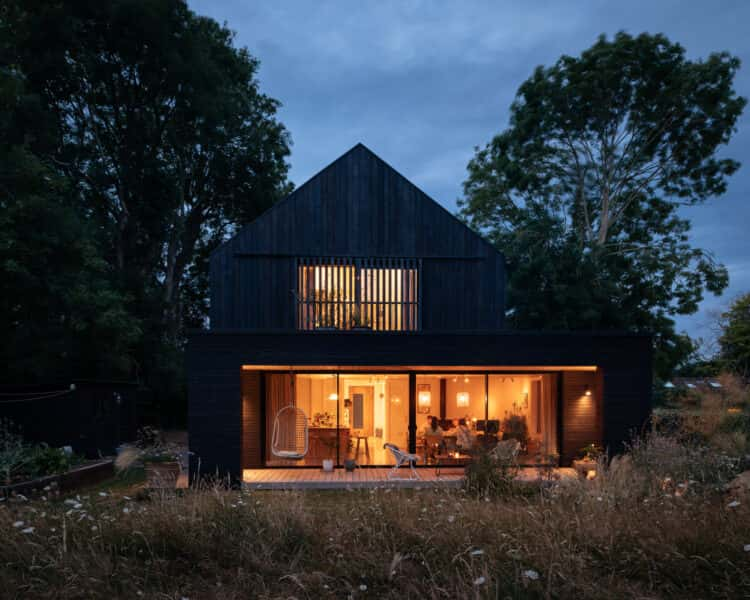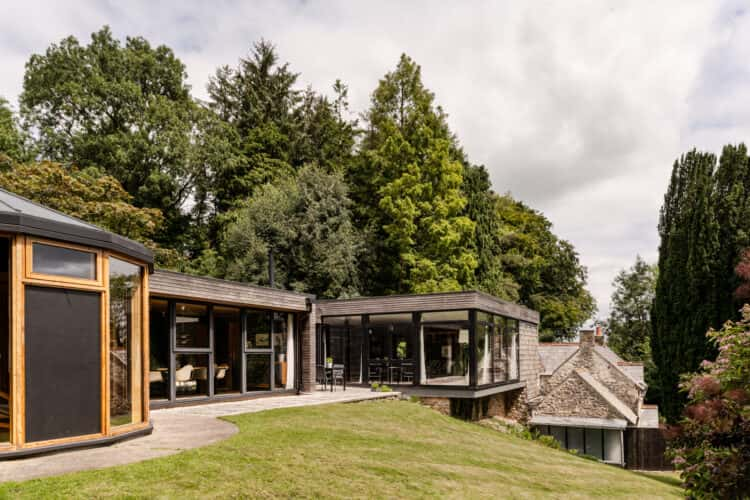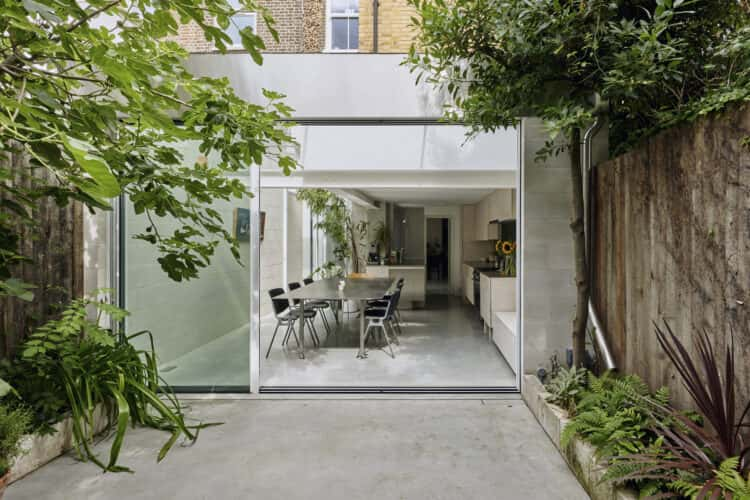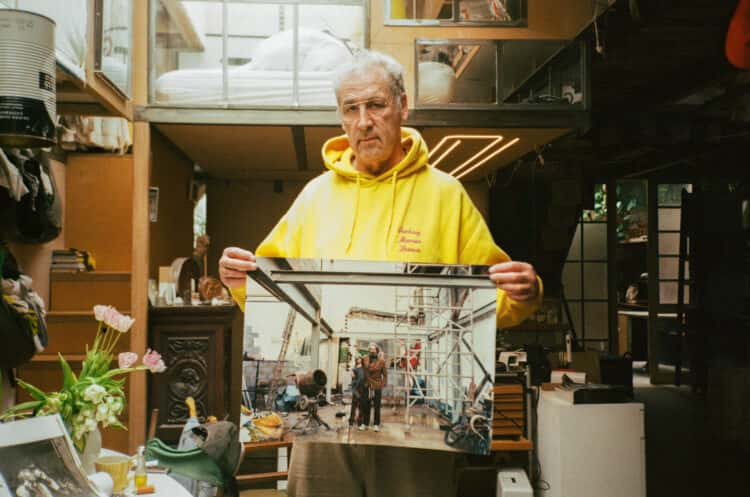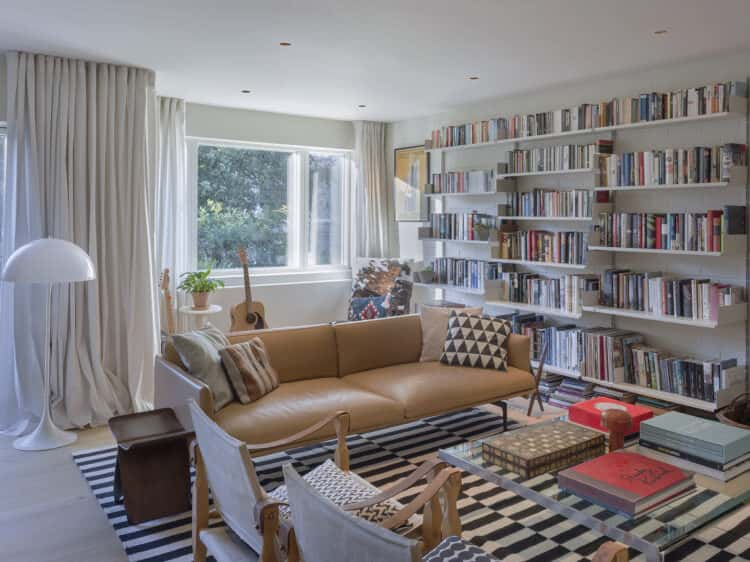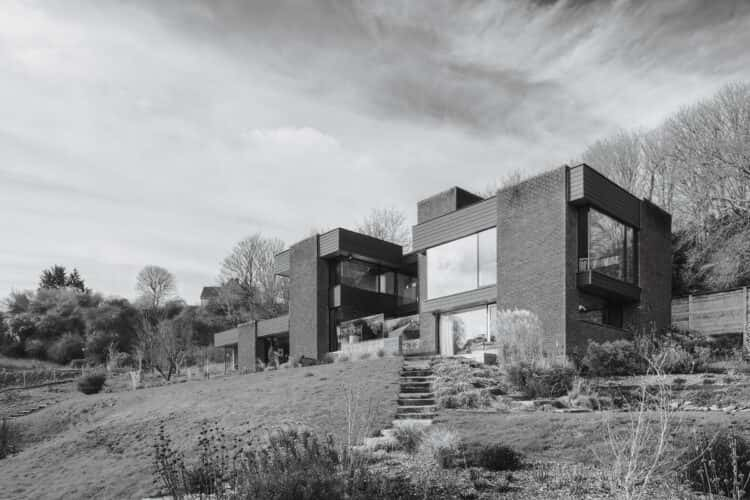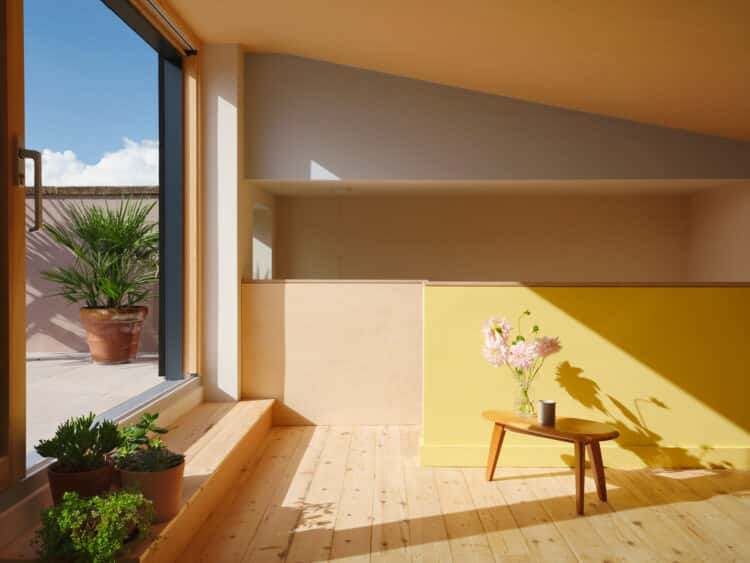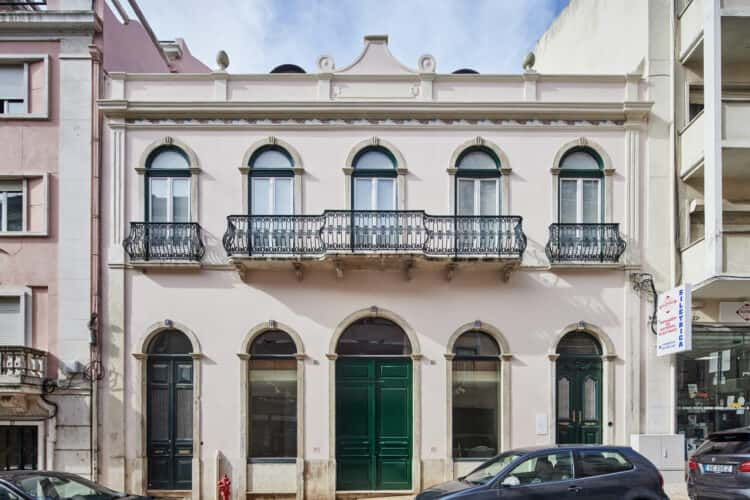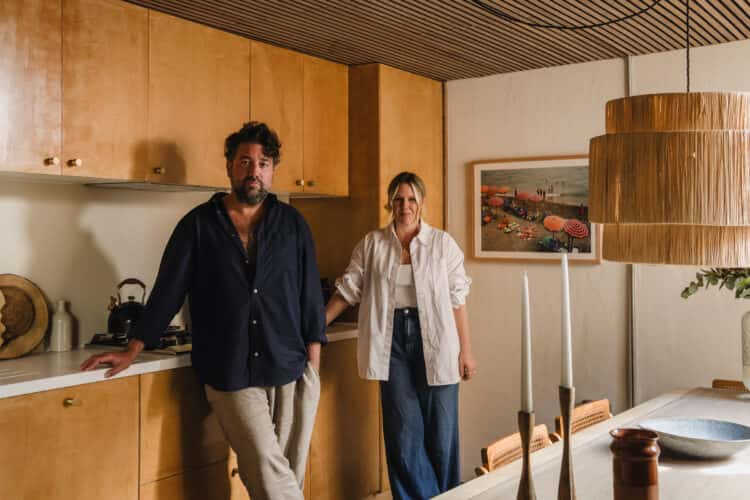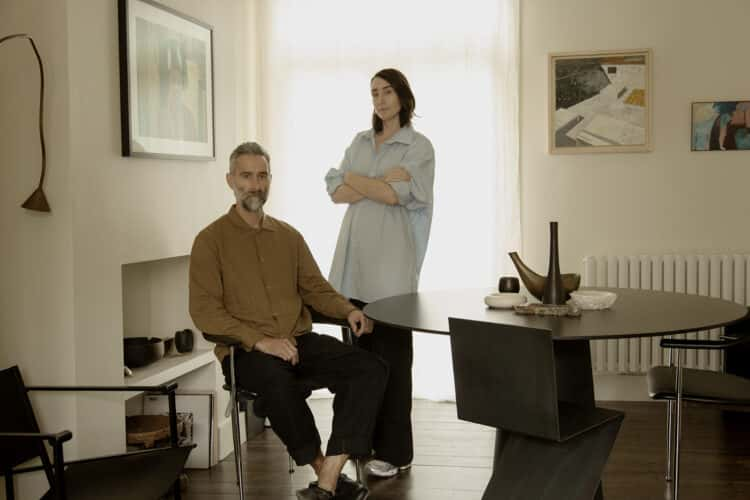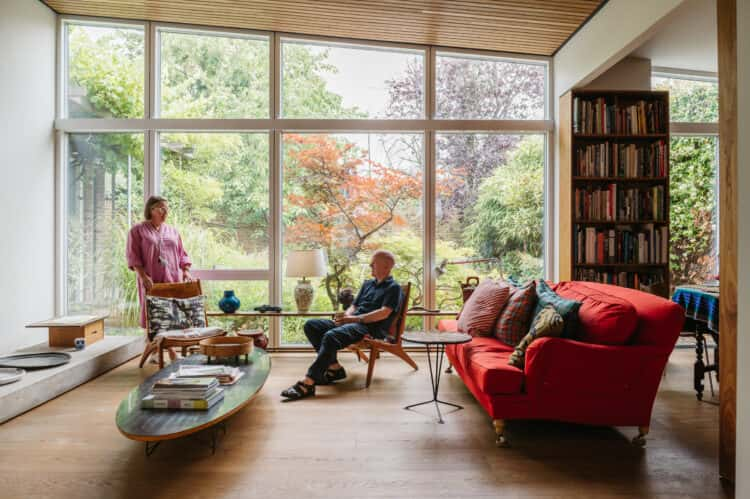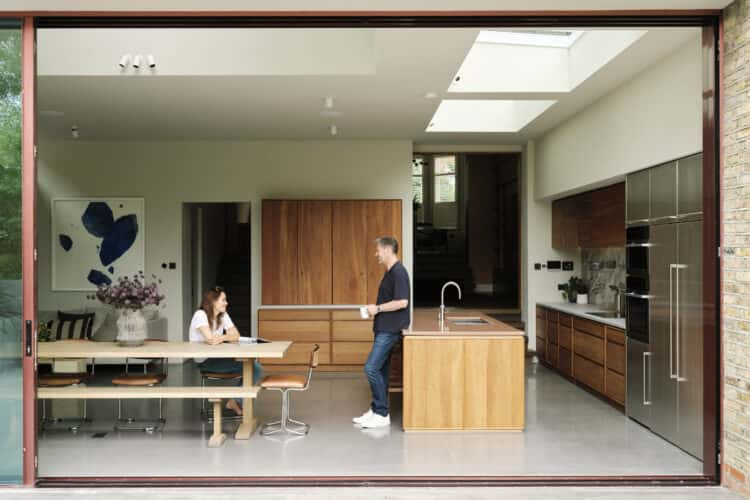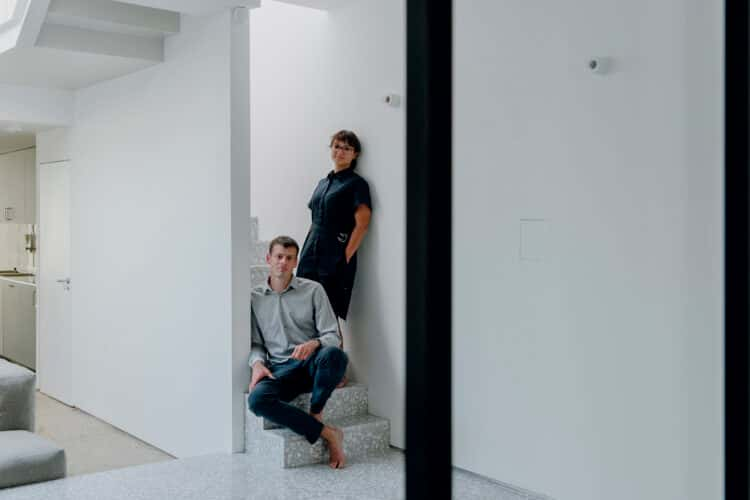With the rolling South Downs on its doorstep, the award-winning Black Timber House by HAPA Architects sits lightly on the land
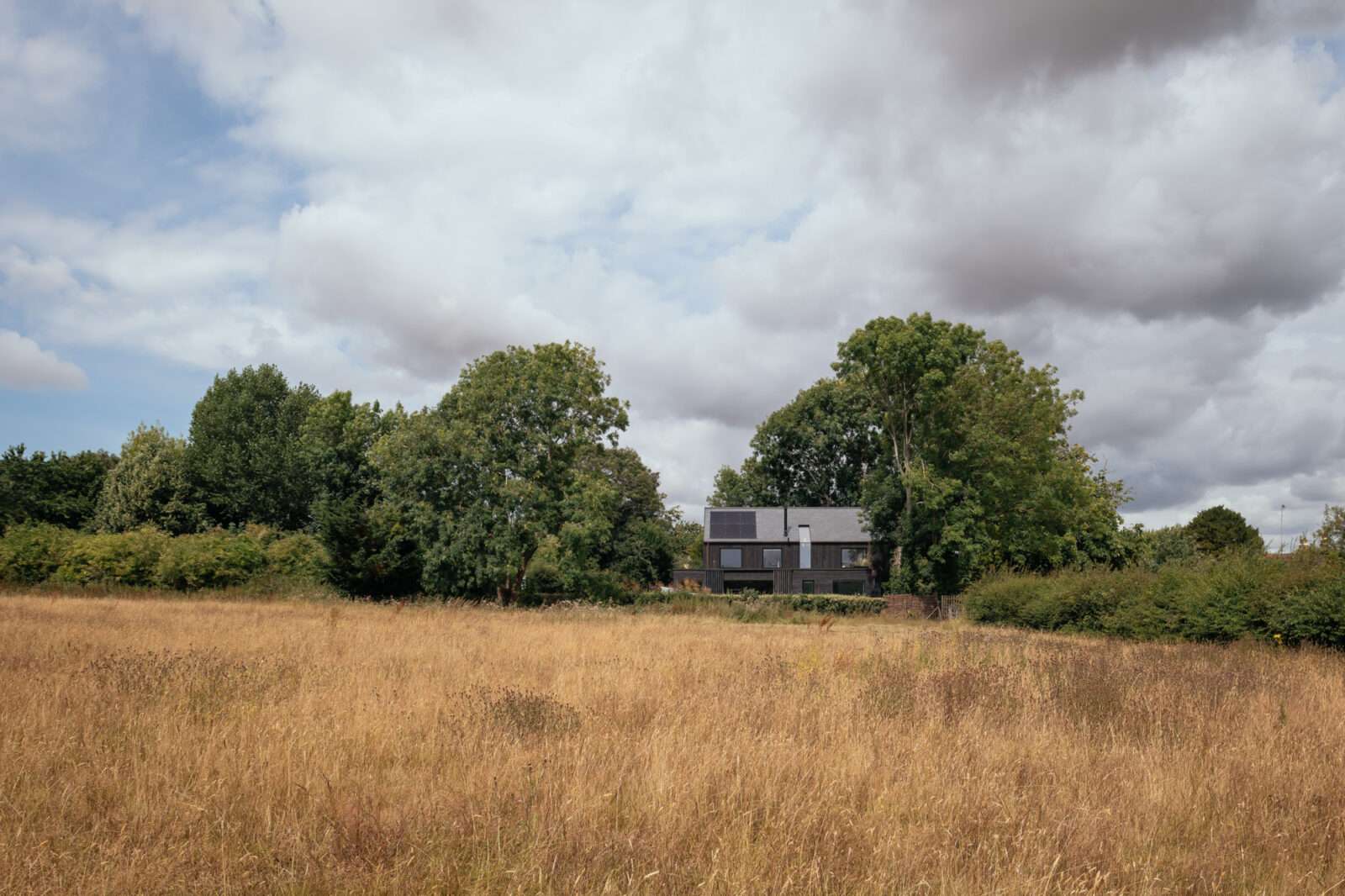
Words Harriet Thorpe
Architectural photography Jim Stephenson
Portrait photography Daisy Wingate-Saul
As a gateway to nature itself, this house has a responsibility to respect its surroundings; it nests between a group of ash trees and recedes softly with its dark colour and simple form. Yet at the same time, it has to meditate with nature, to provide shelter and harness energy for living.
Here in the countryside, Brighton-based HAPA Architects has found a carefully calibrated balance between architecture, nature and living. The house has been recognised by the RIBA South East Regional Award (2023) and the RIBA South East Small Project of the Year (2023) – commended as an exemplar of contextual modern design in a rural setting. It’s the result of a likeminded design collaboration between client and architect, where a shared passion for outdoor connections, natural materials and sustainability has come to life in the shape of a simple, modern farmhouse.
When owner Louise Wingate-Saul commissioned the house in 2020, it wasn’t her first project. She had worked with architect Stuart Paine, director of HAPA, more than 10 years previously on her former home. After bonding over their shared aesthetic sensibilities, they’ve since collaborated on nine projects together, with Louise acting as a liaison for friends’ and now clients’ houses. She has turned her passion into a skill – advising on decisions, attending site visits and negotiating prices on fixtures and fittings.
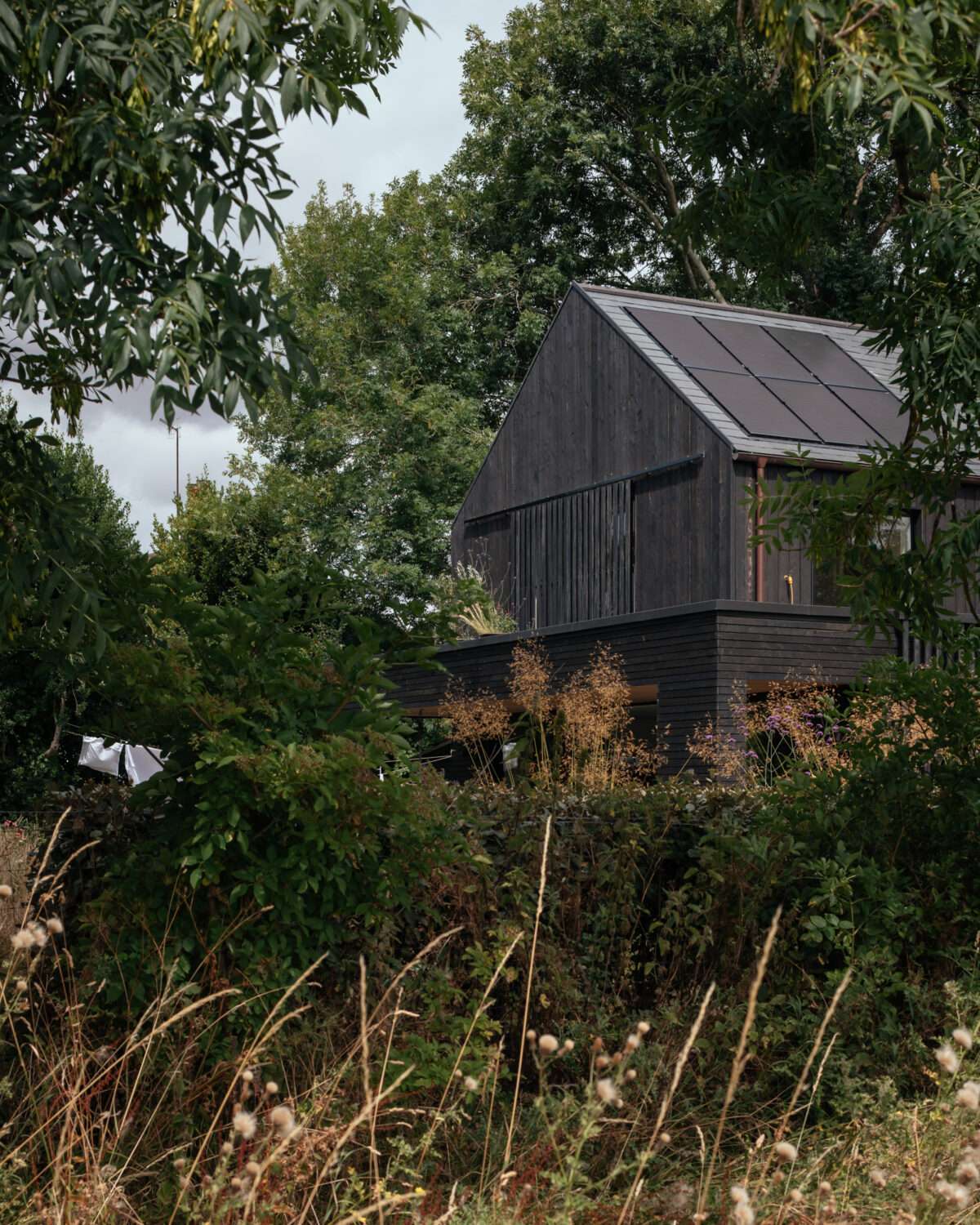
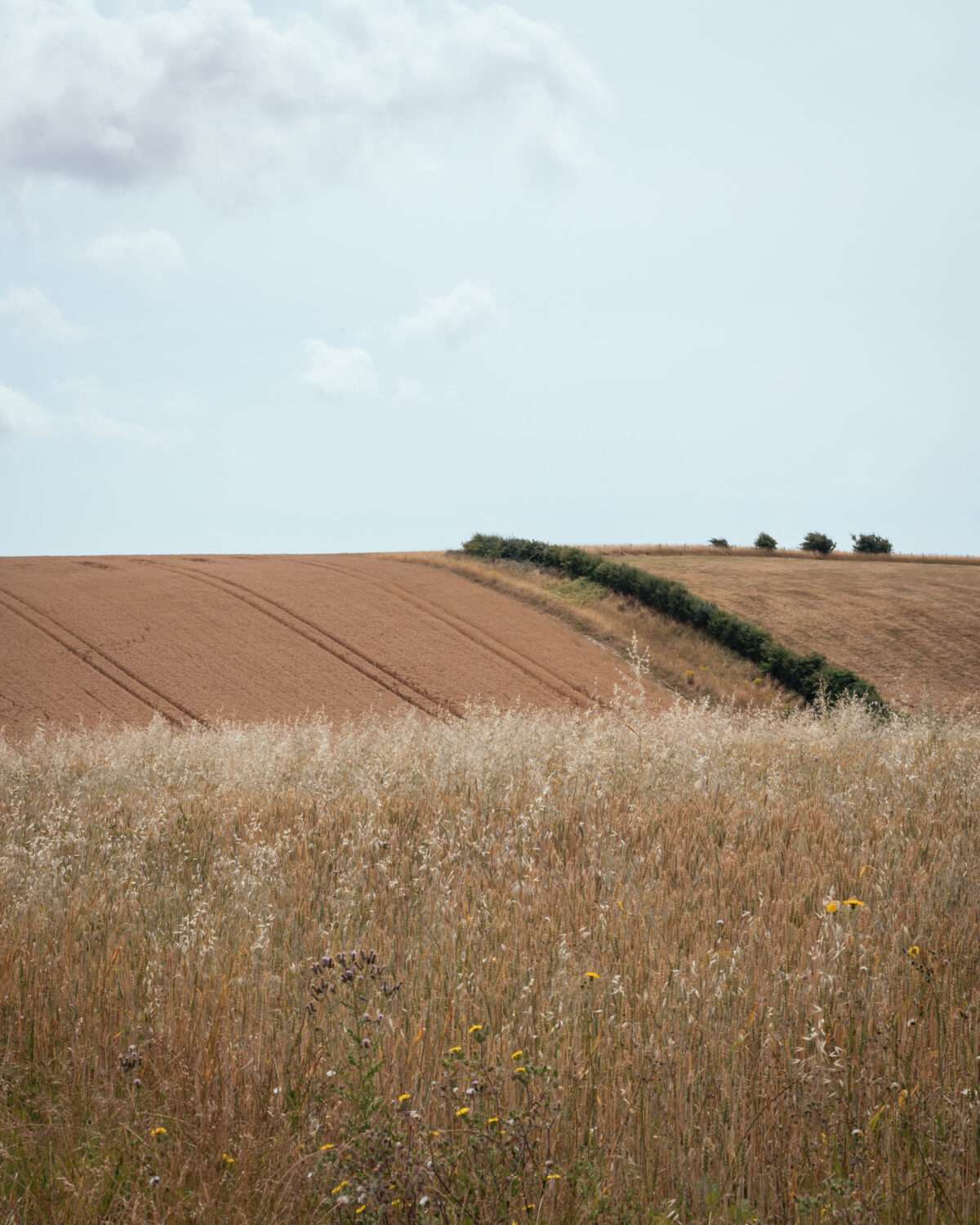
Yet this black timber house on the edge of a meadow is truly her own. It’s tailored to how Louise likes to live – in a sun-infused living space or outside on her veranda, spending time with her grown-up family amid the butterflies and bees in her garden. A sense of living alongside nature permeates the space. Carefully placed windows frame countryside vignettes and daylight penetrates directly into the heart of the house. The sheltered veranda extends the open-plan living space making the modest 176 sqm footprint feel expansive. Upstairs, four rooms with open-ended functions have vaulted ceilings that bring a lofty sense of volume to each space.
As well as connecting its inhabitants to the outdoors, this house is built with natural materials chosen for their patina and tactility. The black timber cladding helps the house sink into the landscape while giving it a monolithic, sculptural appearance. “It’s a very soft material, visually as well as literally,” says Stuart, who specialises in design-led, low energy, timber dwellings. “We carefully consider which types of timber to use and how they sit within the site itself.” Here, English larch has been treated with the Japanese technique of shou sugiban, which involves charring the surface to a silky, jet-black finish that emphasises the grain and protects against mould and algae.
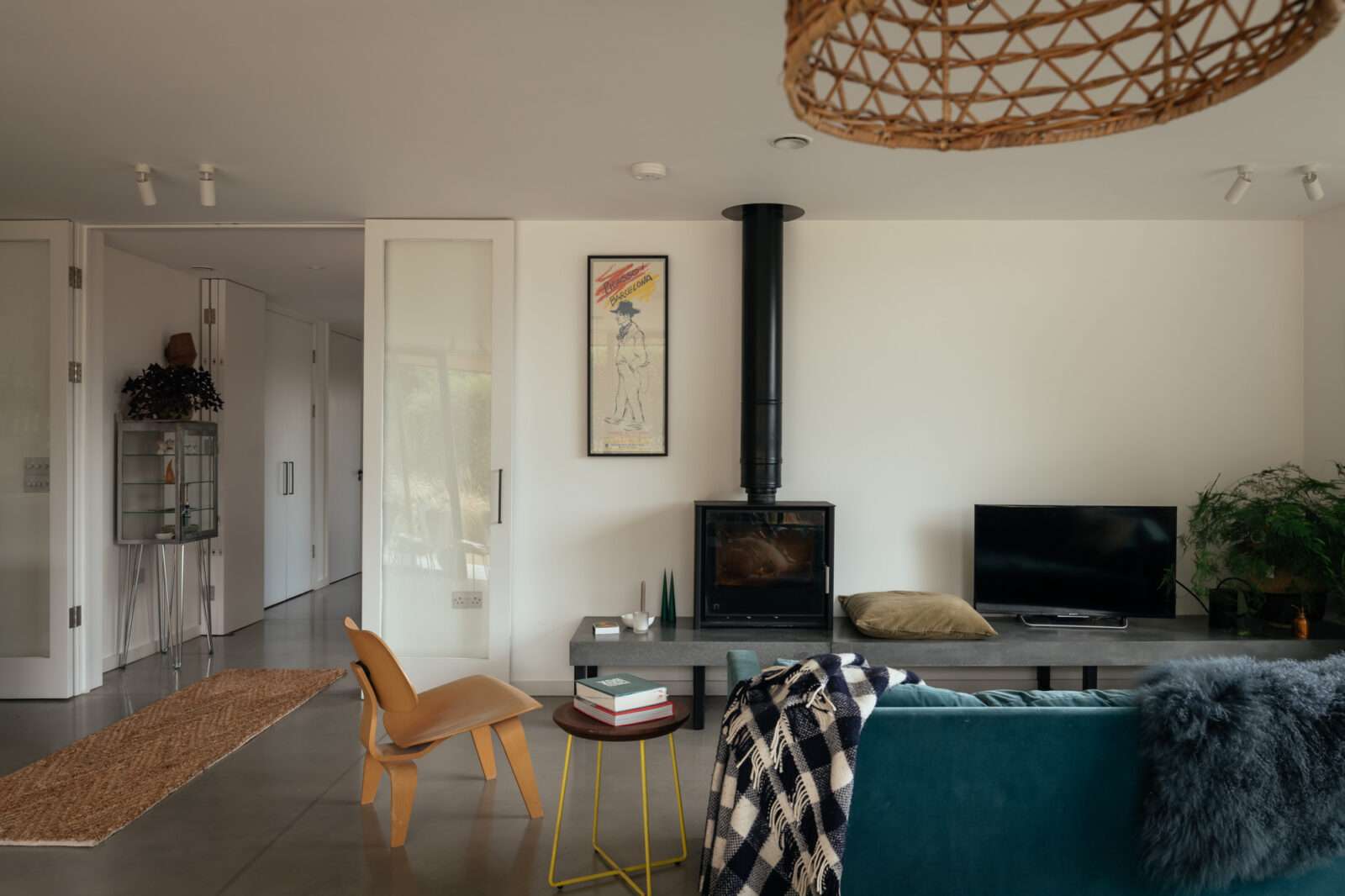
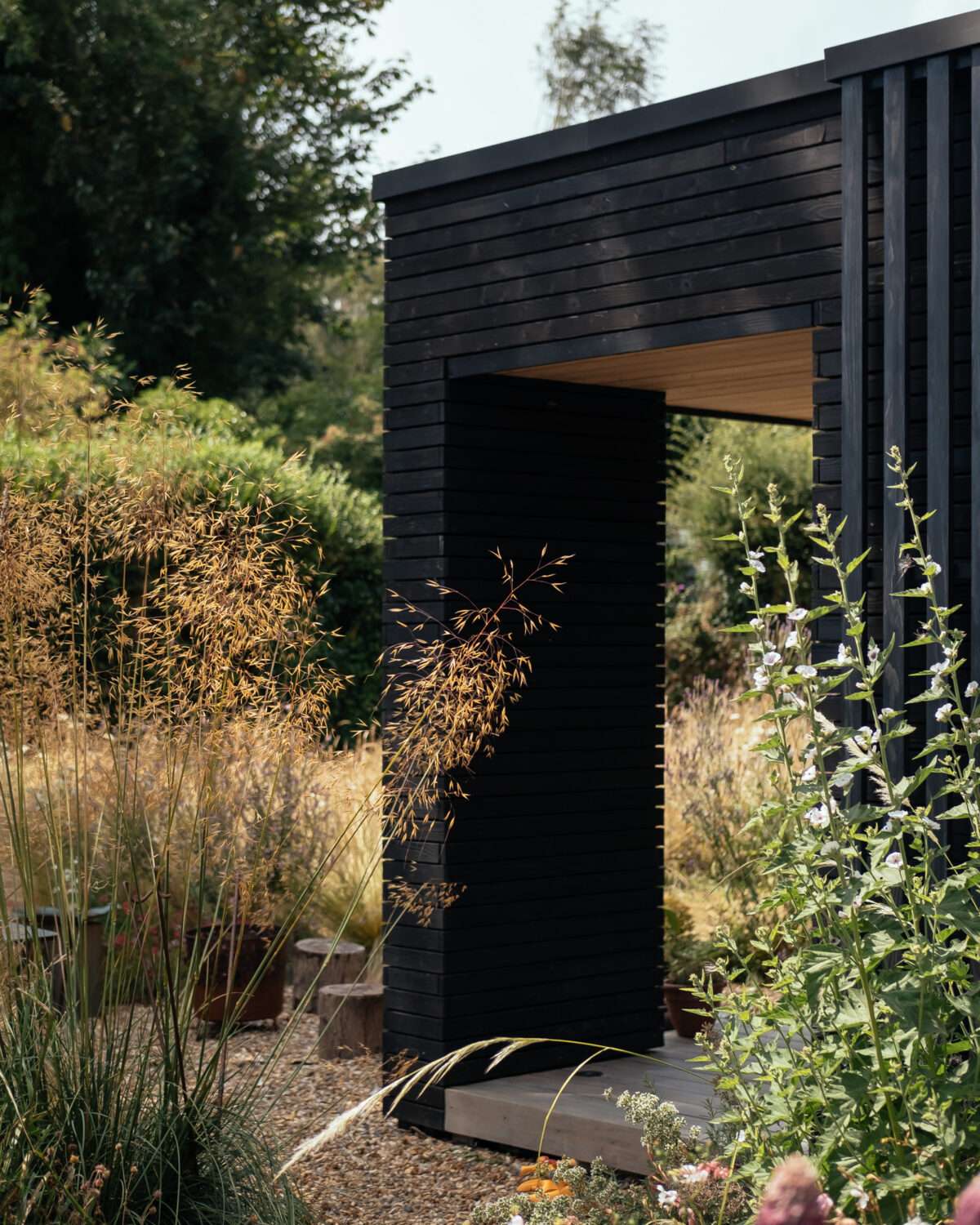
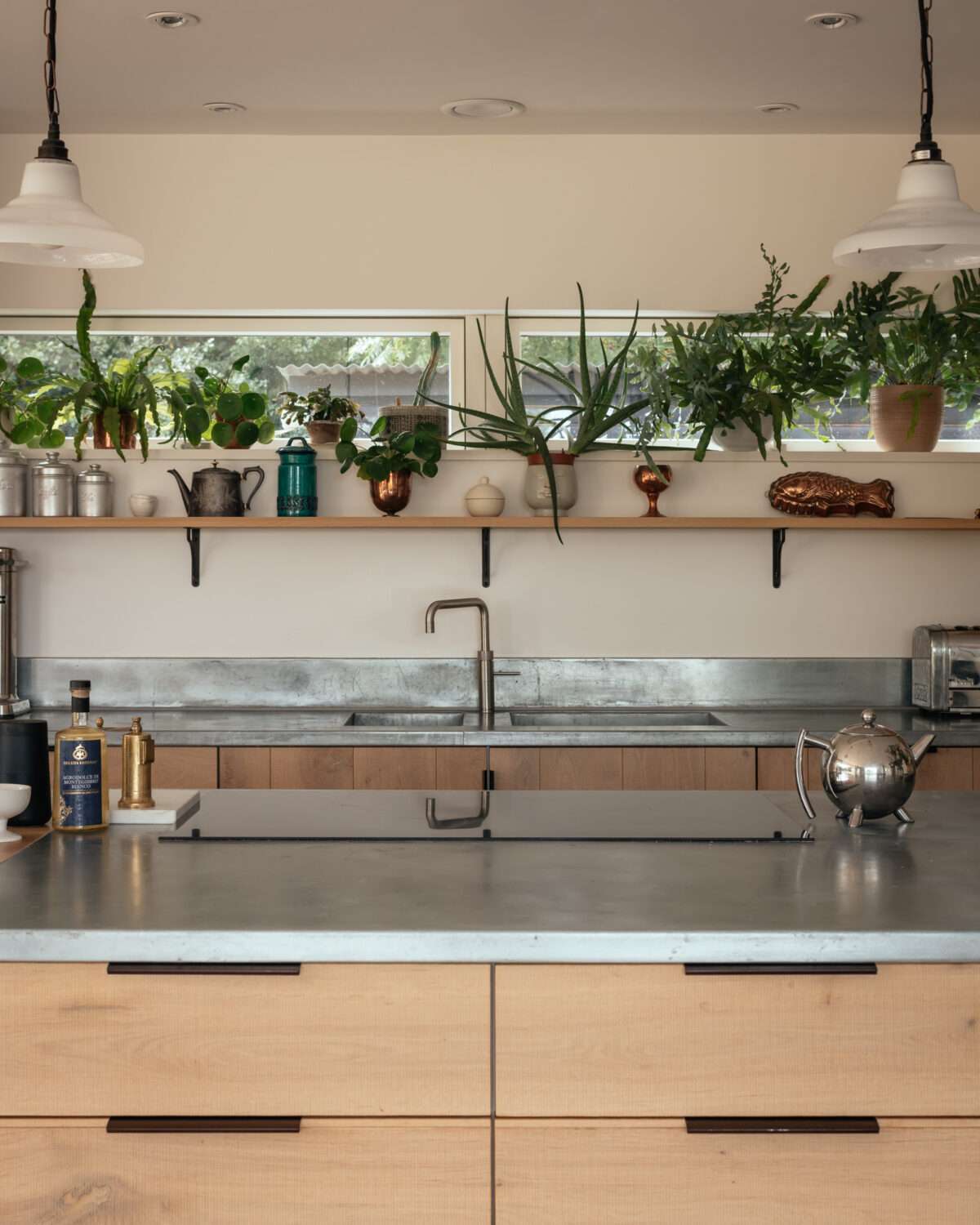
Tactile, natural materials continue inside where Louise has sourced reclaimed oak floorboards to create kitchen cabinets and an oak staircase. The zinc worktop was chosen for its durable, recyclable and changeable nature: “It is a moveable feast,” she says. “I love how the patina changes. Some people want materials to stay the same, but the truth is, natural products evolve.”
The materials and energy nature provides were core to the design and functioning of the house. “For us, sustainability is not an add on, but integral to the way the house is designed,” says Stuart. In addition to using renewable materials for much of the structure, sustainable technologies including photovoltaic roof panels and a low-energy heat exchange and ventilation system (MVHR) complement the passive measures embedded in the architecture itself, from shading to insulation (which is 30 per cent higher than the regulatory requirements at the time it was built).
“In summer I use virtually no energy at all,” says Louise. “Inside, the atmosphere is very even. Even in terrible weather, there’s no condensation or draughts, it’s just a very calm environment to live in.”
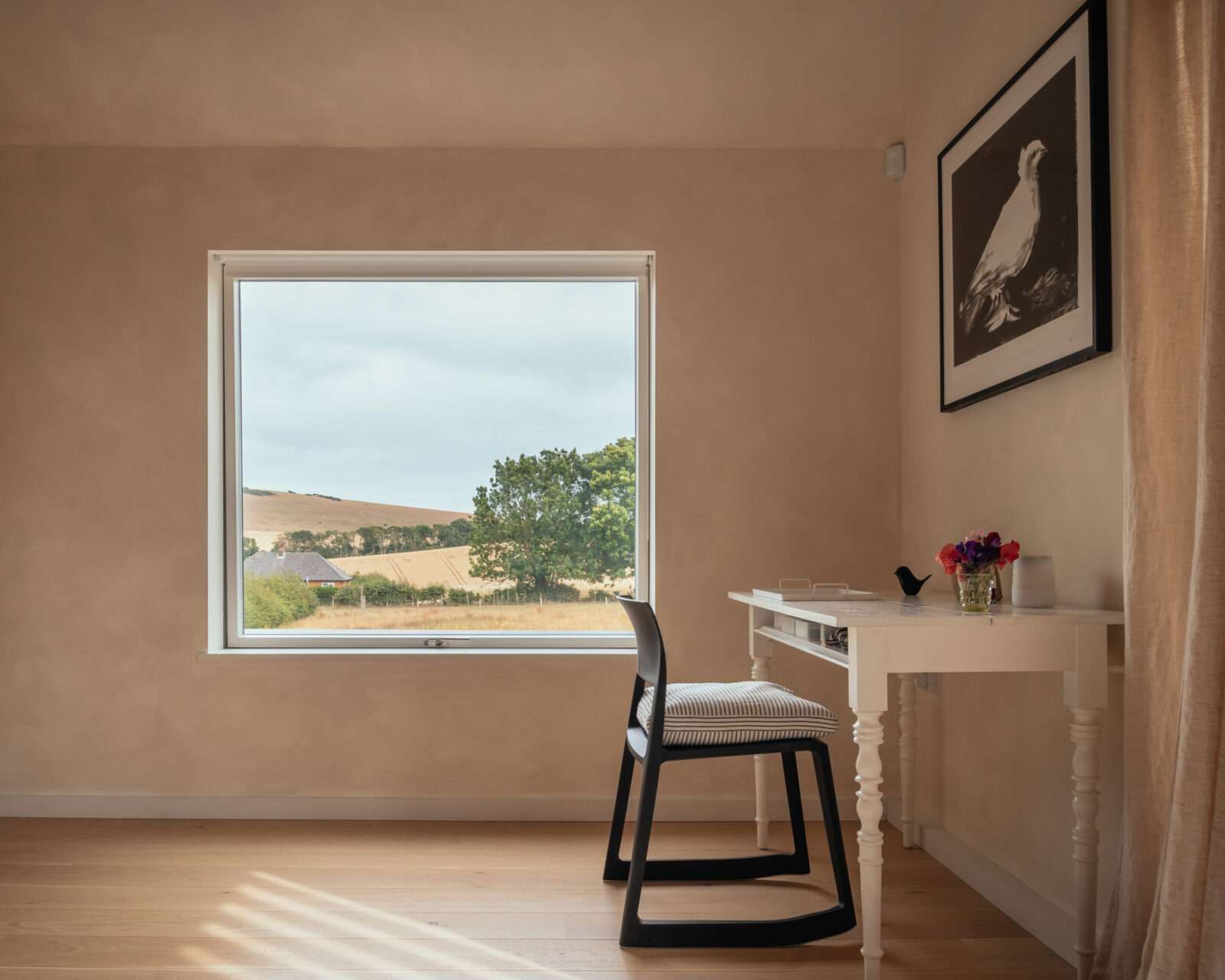
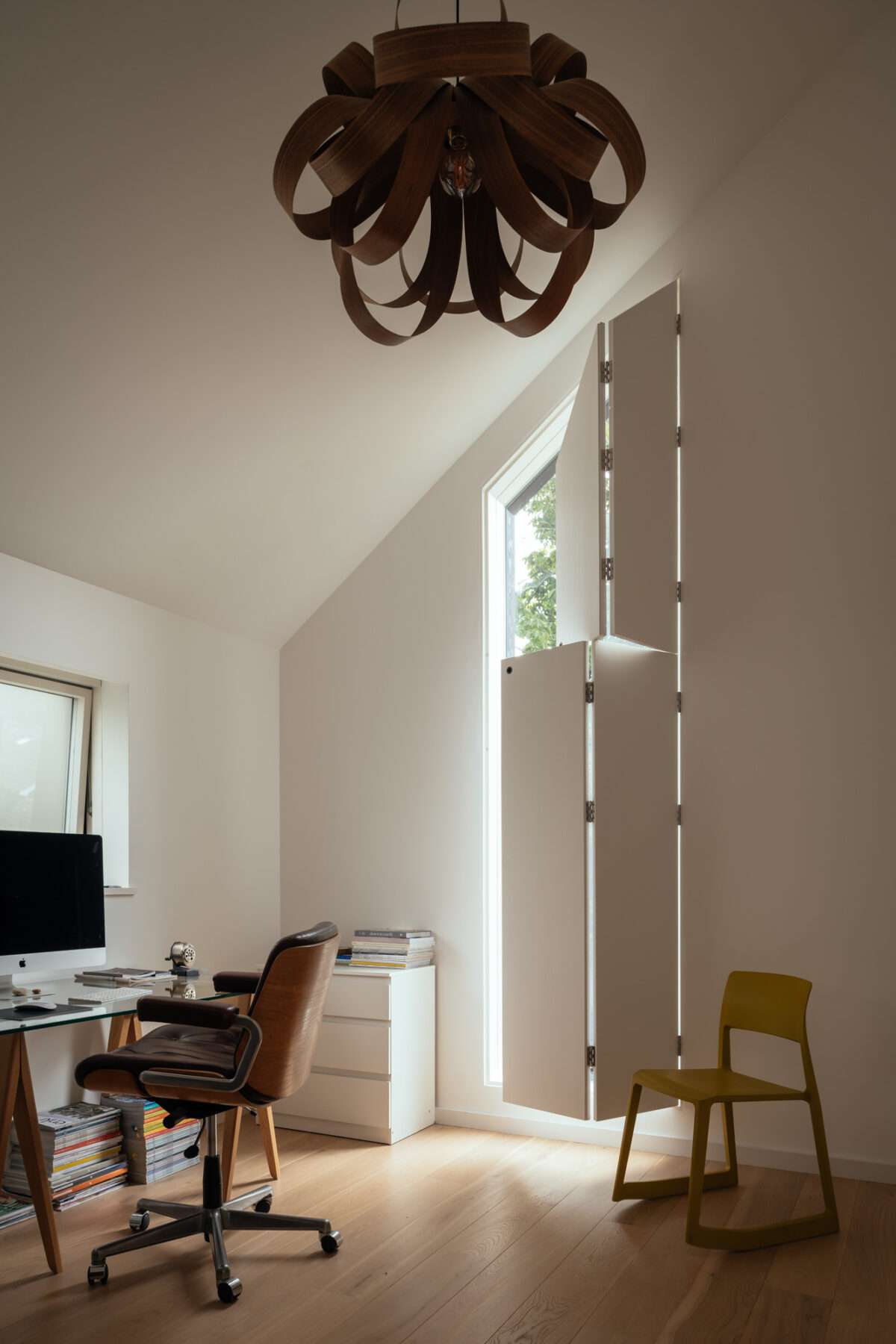
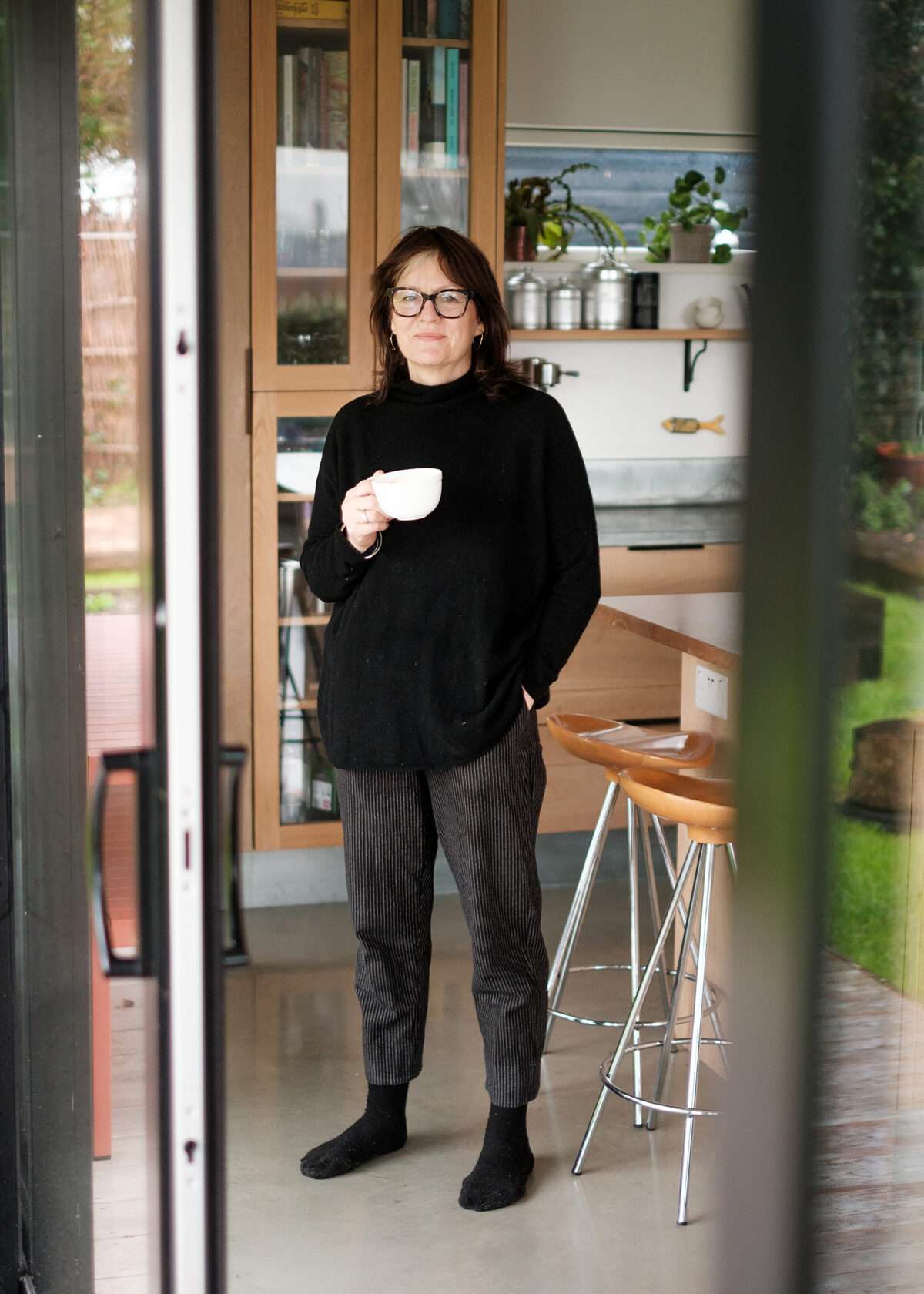
In summer, a cool breeze from the shaded veranda is welcomed into the space. In winter, the warmth of the low sun is stored in the polished concrete floor. Year round, Mediterranean planting looks striking against the black timber exterior while the meadow grasses in the garden blend into the distant Downs. “Even though I’m on the edge of a village, I always feel like I’m in the middle of nowhere,” says Louise. “The joy of sliding open the doors to connect with the smells, sounds, light and flow of nature never leaves me.”
Stuart describes the garden as a bridge between architecture and nature, helping to further mediate the connection between the two. Perhaps instead of a gatehouse, this house is more of a custodian of nature, blending and embracing nature into our lives, instead of dividing us from it.
